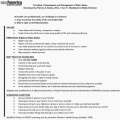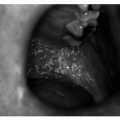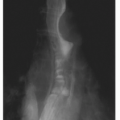EPIDEMIOLOGY OF SUBSTANCE USE DISORDERS IN THE OLDER PATIENT
Alcohol and prescription drug misuse affect up to 17% of those aged 60 years and older, an invisible epidemic because of the difficulty of diagnosis, the shame associated with the illness, and ageism.
1 Comorbid chronic illness, medication use, physiologic changes, and social issues associated with aging combine to put the older patient at increased risk for a substance use disorder. In addition, these factors contribute to a greater impact of substance use disorders on older adults compared to the young. Substance abuse may increase the older patient’s risk of social decline, injury, and illness.
2Older adults tend to favor alcohol and prescription drugs. Illicit drug use is rare among individuals older than 60, with the exception of those with antecedent substance use. In the community, alcohol abuse occurs in 2% to 10% of the older population. In the population of older patients treated in primary care clinics, excessive alcohol use may be prevalent in as high as 12% of women and 15% of men.
3 In the emergency room, the prevalence of alcohol dependence is 15%.
4 For Medicare beneficiaries, alcoholrelated hospitalizations account for 1.1% of admissions, approximating the prevalence of myocardial infarction. From 2% to 3% of older patients in the community receive prescriptions for opioids, and these medications rarely cause problems. Benzodiazepines comprise 17% to 23% of drugs prescribed for older patients and are far more problematic in causing sedation, ataxia, memory problems, and delirium.
5 Among drinkers, 15% report nightly use of sedatives,
6 and benzodiazepines are associated with an increased risk of falls.
7
Alcohol and Aging
There is no evidence that
moderate alcohol consumption causes cognitive impairment in older individuals. However, older patients experience higher blood alcohol levels (BALs), given the same amount of alcohol consumed, than do their younger counterparts because of declining hepatic metabolism and renal excretion
8 (see
Table 8.1). Unfortunately, alcohol abuse or dependence can have a profound effect on multiple areas of the older patient’s health (see
Table 8.2).
Because of the interaction of comorbid states and alcohol consumption, most authorities recommend a downward adjustment of moderate alcohol intake in the older patient (Evidence Level C). The recommendations for the general population are to avoid more than two drinks daily for men and no more than one daily for women. Men are cautioned not to drink more than four drinks in any given day, and women not to exceed three on any given day.
9 For patients older than 65, it is recommended that they do not consume more than one drink daily and less than three on any given day.
10 Comorbid states, medications, and social considerations should result in lower recommendations.
Alcohol Use Disorders in the Older Patient
Because of the significant impact that excessive alcohol intake has on the older patient, emphasis has been placed on problem drinking rather than the traditional considerations of alcohol dependence. Reliance on rigorous
Diagnostic and Statistical Manual of Mental Disorders, Fourth Edition (
DSM-IV) criteria for alcohol dependence would underestimate the problem among the elderly. It has been suggested that the terms
alcohol abuse and
alcohol dependence be abandoned for the older patient and replaced with the concepts of
at-risk and
problem drinkers. The “at-risk” drinker is defined as an older patient drinking more than recommended (greater than one drink daily) and whose pattern of use, although not yet causing problems, can bring about negative consequences for the drinker or those around him or her. The “problem drinker” is already experiencing these problems as the result of excessive alcohol use.
11Elderly drinkers are often further classified as those with early versus late onset of drinking. Early onset drinkers are described as having problematic drinking that began before the age of 40. These patients are often long-standing alcoholics who have continued their abusive drinking patterns as they age. They often have psychiatric disorders in addition to their substance use disorders. Late-onset drinkers in contrast do not display problematic drinking until after the age of 50. Often, they begin heavy alcohol intake after the loss of a loved one, or as the result of poor adjustment to retirement or other losses. They tend to be healthier than the early onset drinkers and tend to respond better to treatment. It is thought that about one third of problematic older drinkers are of this late-onset variety.
12 Risk factors for late-onset drinkers can be found in
Table 8.3.
Other Drug Abuse in the Elderly
Abuse of prescribed substances is more often a concern among older patients because illicit drug use is uncommon. Opioids are not commonly prescribed for older adults and do not frequently lead to addiction. Tolerance to opioids
decreases with age, as do the frequency and severity of side effects. This is thought to be secondary to increased receptor sensitivity.
13Benzodiazepines are often encountered as a problem in the elderly and may be overused. In some communities, 25% of the older than 65 population takes tranquilizer or hypnotic medications at any given time.
14 Whereas younger adults may not experience physiologic dependence until after 6 months or more of regular use, older patients may become dependent in as little as 3 months.
15 The adverse effects of chronic benzodiazepine use are outlined in
Table 8.4.
Tobacco Use and Older Adults
Smoking declines with age. The prevalence of smoking in the United States is 23.4%, but after the age of 65 this decreases to 15% in men and 11% in women. Because tobacco abuse causes >400,000 deaths in the United States annually and >4 million older Americans smoke, the burden on the health of older patients is greater for tobacco abuse than any other abused substance. There is significant comorbidity between tobacco use and alcohol abuse. From 60% to 70% of male alcohol users smoke, and the prevalence of smoking among alcoholics is >80%.
1 The
decrease in risk begins almost immediately after smoking cessation, and older smokers are more likely to quit than younger patients.
PRACTICAL MANAGEMENT OF SUBSTANCE USE DISORDERS IN OLDER PATIENTS
Methods for identifying substance use disorders include screening and assessment, intervention, detoxification, treatment, and aftercare. Although these methods are similar for all ages, special considerations and expertise are required when applied to the older patient.
Screening and Assessment
Social isolation, ageism, retirement, and chronic illness reduce the likelihood that the older patient’s substance abuse will be noticed by others. However, almost 90% of adults older than 65 see a physician on a regular basis. These visits provide an opportunity for health care providers to play a central role in the identification of substance use disorders in this population.
The use of common screening tools such as the CAGE (cutting down, annoyed, guilty, and eye-opener) (see
Table 8.5) and Michigan Alcoholism Screening Test (MAST) can identify patients with alcohol problems at relatively high sensitivity. In the older patient, removing the
C question, “Have you ever felt the need to cut back on your drinking?,” appears to strengthen the CAGE specificity without significantly reducing its sensitivity.
16 The MAST has been modified to the Short Michigan Alcoholism Screening Test—Geriatric Version (SMAST—G) (see
Table 8.6).
17Apart from screening tests, laboratory markers (see
Table 8.7) may identify patients who require further evaluation. Biochemical markers such as
γ-glutamyl transferase, mean corpuscular volume, and carbohydrate-deficient transferrin have low sensitivity and specificity but are useful when used with other screening tools.
18
Diagnosis of Substance Abuse versus Substance Dependence
A positive screen requires the clinician to differentiate between substance dependence and physical dependence. The term
substance dependence is synonymous with addiction; however, the term
physical dependence is not. Physical dependence refers to a physiologic state of adaptation of specific receptors in the brain such that when a drug is taken for a period of time and subsequently stopped, a predictable withdrawal syndrome is experienced. This phenomenon may occur in or out of the context of addiction. Substance dependence or addiction is a pattern of drug use that is most simply described as a loss of control over the use of a substance such that the person with this disease will use drugs despite the continued occurrence
of important negative consequences of the drug use. The essential difference between substance abuse and dependence is that the person with substance abuse retains some control over its use and can modify that use in response to negative consequences. The person with substance dependence appears to be unable to exercise control over his or her drug use despite these negative consequences. From a practical point of view, the difference may be seen as one of number and severity of consequences. The more severe and numerous the consequences in the face of continued drug use, the more likely the patient will meet the criteria for substance dependence (see
Table 8.8).


 Get Clinical Tree app for offline access
Get Clinical Tree app for offline access




